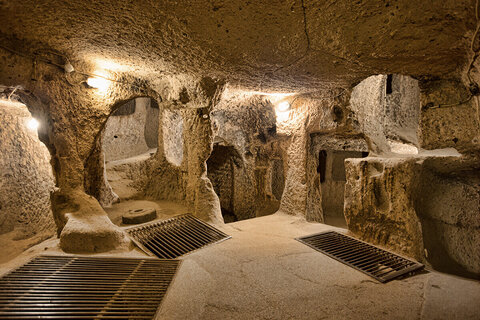Iran (IMNA) - With a three hectare size, the hand-carved subterranean city is one of the biggest in Iran and even West Asia. It is located beneath the contemporary city of Tafresh.
Archaeologists and cultural heritage specialists have so far conducted two archaeological seasons on the underground city, excavating 400 square meters of underground chambers and passages.
Several years ago, while working on a building project, the underground city was unintentionally found. According to legends, it provided sanctuary for locals during the early 13th-century Mongol invasion of Persia.
According to local officials, the hand-carved subterranean city has the potential to become a popular tourist attraction for both domestic and foreign visitors, but there will need to be additional lodging alternatives, including eco-lodges.
According to scholarly research, the development of hand-built troglodytic architectural sites is influenced by a number of variables, such as the climate and geography, defense, security, durability, and religion, all of which are closely related to the cultural, political, social, and economic context. The exterior form, interior space, and purpose of this building may be categorized into several formal categories (religious, tombs, residential, and shelter).
Handmade troglodytic architecture is a different type of architecture that does not require large building materials and hence has a very minimal environmental impact since it is created mostly through the extraction of space rather than the addition of bulk. Architecture by removal rather than addition offers several alternatives that need extensive investigation and analysis.
There is no priority in creating a troglodytic structure, either from the roof or from the floor, because there is no mandatory procedure for making spaces rather than material cohesion. To sculpt the internal space of stone blocks, boulders, and dirt heaps, a range of instruments such as an ax, hammer, chisel, and sledgehammer are required.
Because of Iran's many climates, there are several beautiful examples of this architecture around the country. This distinctive design is in opposition to traditional settlement patterns and building techniques and may always make use of the mountains and valleys on the floor or wall, which is a useful strategy to regulate climate change in various places.

Tehrantimes


Your Comment